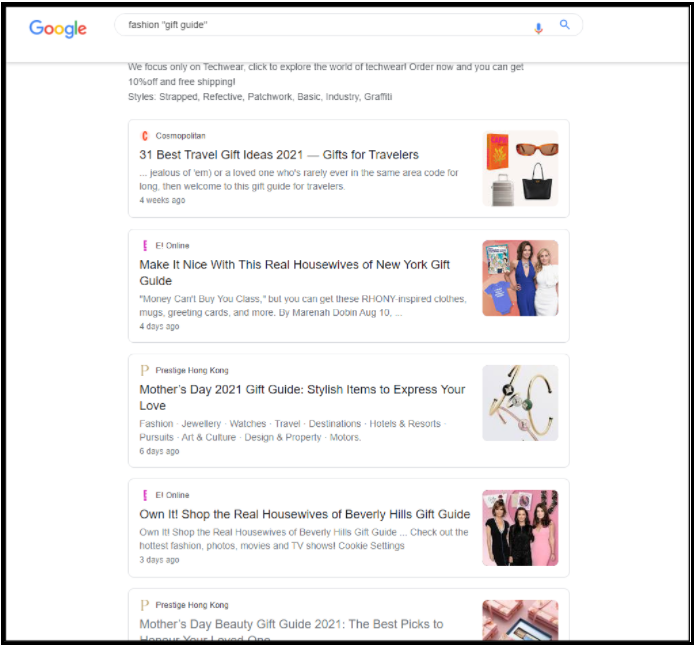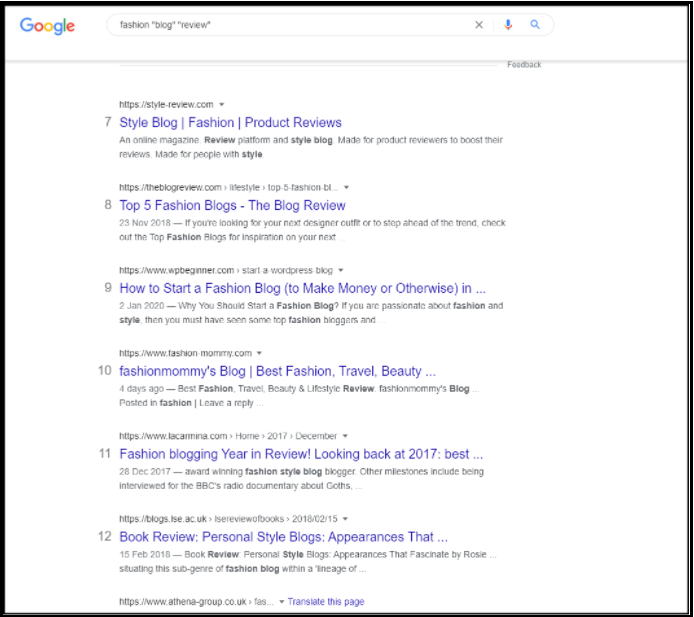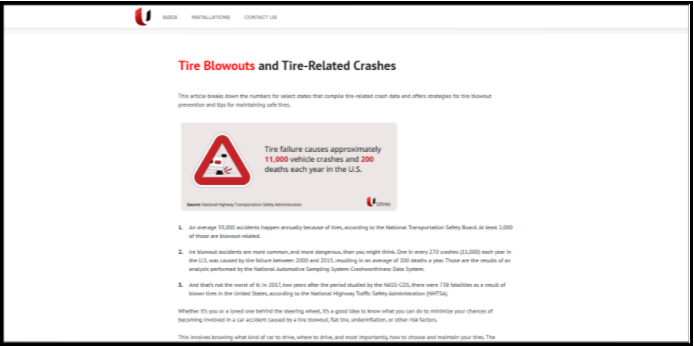The number and quality of links that a page has are one of the biggest factors in determining how well it ranks in search engines compared to other pages that target the same keyword.
That's why you should have a strategy to get more backlinks to your website. Here are
4 ways to build backlinks to your product pages
- Work with journalists Work with journalists to get featured on product roundups
- Get bloggers to review your products
- Write strategic guest posts where your product acts as a resource
- Create linkable assets on your site and internally link to your product pages
Why getting backlinks is so important
You can see this from the example keyword “buy grill pan online” below.
Notice how many links are pointing to each ranking page as indicated by the fourth column to the left (named “backlinks”).

Getting people to link to your website’s product pages is challenging.
In most cases, people link to pages when they want to cite unique information.
Unless you sell something unique and so remarkable that it is worthy of being regularly written about, your product pages are unlikely to ever be cited in this way.
You, therefore, need to get a little creative in building links to your product pages.
Let's go in-depth about the four strategies that you can use to build such links.
1) Work with journalists to get featured on product roundups

You can get large authority sites to link out to your product pages by getting relevant products featured in product roundups and gift guides run by journalists.
A “gift guide” is where a journalist runs through their pick of the best items to give someone as a gift for a certain holiday or occasion.
You can find an example of a recent gift guide for Mother’s Day here.
In these gift guides, journalists usually place links to the product pages of products featured, so readers can easily find where to buy them.
Getting your products featured in these articles takes a three-step process.
They are:
- Picking products that are suitable for inclusion
- Identifying journalists who run these roundups
- Pitching the journalists.
Let’s now go through how to do each of these in more detail.
Selecting products that are suitable for inclusion in gift guides
When putting products forward for selection in gift guides, it's always worth remembering that gift guides are always themed around a certain occasion or group of people.
Common themes include:
- Christmas
- Thanksgiving
- Mother’s Day
- Father’s Day
- Gifts for newlyweds
- Gifts for college kids
- Gifts for children
Look at your best-selling items, and group them into different demographic categories.
One’s that exemplify a certain demographic are particularly suitable for inclusion.
It’s also worth prioritizing pitching items that are particularly aesthetically pleasing or photogenic.
Gift guides almost always include hi-resolution photos of the products in question, and having eye-catching imagery will certainly make your items more likely to be included.
Identifying journalists who run gift guides

Generally, the same handful of journalists run gift guides in a particular industry.
Therefore you can identify journalists who are likely to run upcoming gift guides by looking at who has run them in the past.
The best way to do this is to go onto Google News and search [your industry] “gift guide”.
Set Google so it only shows you results for the past year.
You can see the results for the keyword fashion “gift guide” below:
Once you have identified specific journalists, it's worth looking at their back catalog of gift guides to see both what type of gifts they tend to include and what type of occasions they tend to write gift guides for.
This should inform your pitch to them!

Pitching the relevant journalists
When you pitch journalists, you essentially want to spoon-feed them what to put in their article.
Journalists are responsible for a huge output of content each day, so you need to make it as easy as possible for them to include your product.
Your pitch should therefore include:
- What occasion you are pitching your item for
- A three to four sentence description of your products
- Some high-quality images of your product
- The price(s) of your product
- Links to your product pages
You can find a more detailed guide on what to put in these types of pitches here.
You should pitch journalists 3-4 weeks before you expect their gift guide to be published.
2) Get bloggers to review your products

As well as getting journalists to mention your products in their gift guides, you can get bloggers to link to your product pages by having them review relevant products.
The process for getting bloggers to review your products is similar to getting journalists to include your products in their gift guides.
It first involves finding relevant bloggers who run product reviews, and then you need to reach out to them to pitch your product for review.
You can find these relevant bloggers by searching the following keyword: [your industry] “blogger” “review”.
Again, using fashion as an example, you can see the results for this search below:
In this example, results number 7 and 10 are both websites of bloggers that we can reach out to to get them to review some of our products.
When selecting which bloggers you want to reach out to, it's worth checking their site traffic with an SEO tool and looking at the size of their social following in an attempt to estimate how many eyeballs your review will get.
You want referral traffic as well as links when doing this.
Bear in mind that bloggers care more about providing honest information to their fans than about making your product look good.
If they do not like your product(s) they will be honest about this.
You should therefore make sure that you send these bloggers some of your best products, and that you send a good selection of your products.
You do not want to come across as stingy here.
The blogger should feel as if they are getting a good deal by getting some free products in return for their time and exposure to their audience.
3) Write strategic guest posts where your product acts as a resource

Guest posts are one of the most common ways of building backlinks to a website.
It simply involves writing an article for another website and linking back to your website in this article.
Now, guest posts usually are not the best ways to link back to your product pages.
This is because the links in guest posts should act as a natural resource for your guest article, and product pages are generally not the best candidate for this due to their lack of informational content.
You can, however, build links to your product pages via guest posting if you come up with topics and angles to write about where specific products act as a natural resource to your post.
Some examples of this include:
- If you sell suits, you can write a post for the blog of a recruitment company talking about which suits make the best impression at a job interview. You can then link to your selected suits in your post.
- If you sell car parts, you can write an article for a parenting website talking about the safest car part replacements for young drivers’ cars. You can then link to these car parts in the post.
When thinking about topics and target websites for your guest post-campaign, it's worth thinking about businesses in “shoulder niches” to yours.
These are businesses that serve the same audience that you do, but who are not in direct competition to you.
The blogs of types of businesses are great to guest post on because you can create content that endorses both your businesses without a conflict of interest.
You can find a more in-depth guide on how to do this here.
4) Create linkable assets on your site and internally link to your product pages

If none of the above tactics work for you, the next best option to supply product pages with authority from links is to internally link to them from other pages of your website.
You can pass authority to your product pages by linking to it from another page of your website that has a lot of links pointing to it.
Pages that tend to get linked to a lot are ones that have original research, or that have curated statistics.
You can therefore conduct a study into a pressing issue in your industry, or curate a load of statistics relevant to your industry in an attempt to create a page that gets cited by others writing about relevant topics.
For example, to build links to my store selling car tires, we have curated some statistics about tire blowouts.
You can find a screenshot of this page below:

You can then link to products that you want to give a boost in search rankings from this page.
Given the relevance between your statistics page and your product, you should be able to funnel relevant links to your product page via this statistics page.
Conclusion
Although it is better to build external links directly to your product pages, using a data-rich page as a conduit between external sites and your product pages can help you build a greater quantity of links in the long run.
 This article was contributed by Mike Skoropad. Mike is the CEO of online tire retailer United Tires.
This article was contributed by Mike Skoropad. Mike is the CEO of online tire retailer United Tires.









